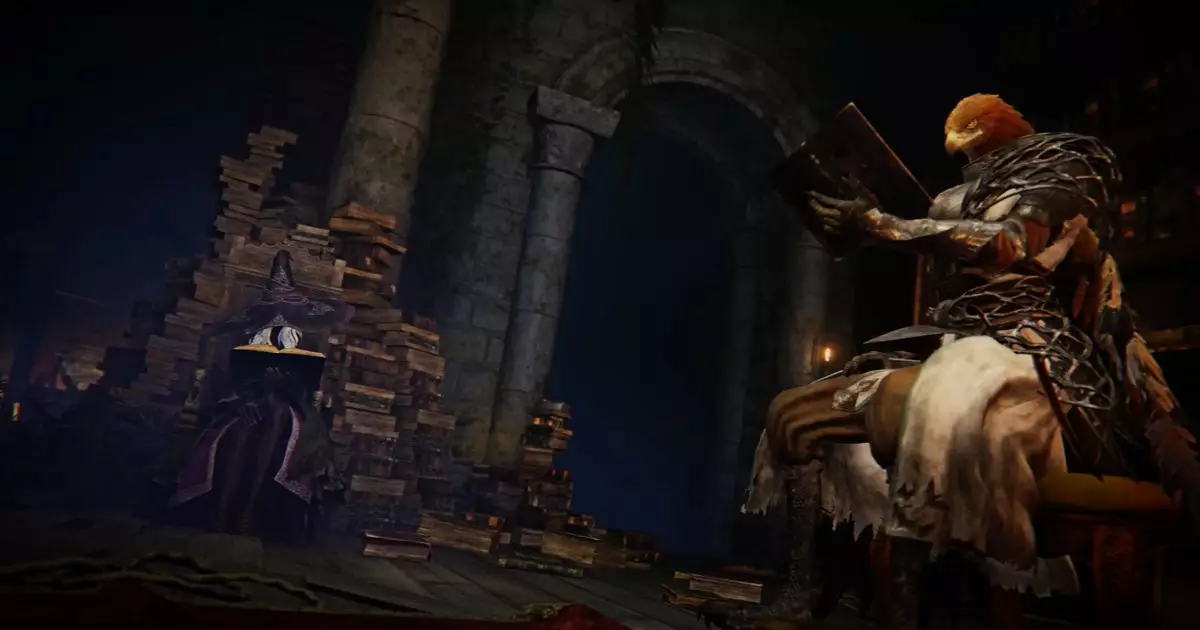In the realm of gaming, especially within the intricately woven narratives of FromSoftware titles, character design serves as more than just a visual appeal; it acts as a narrative vessel through which players experience a world fortified by lore. With the recent surge of interest surrounding Elden Ring’s Nightreign expansion, fans are dissecting the very fabric of its character models—particularly the Guardian, a figure draped in feathered complexity. The exploration of what lies beneath a character’s exterior not only fuels the curiosity of the gaming community but also adds layers to the storytelling mechanism that FromSoftware is renowned for.
Character customization in Nightreign deviates from the traditional player avatar creation seen in previous titles. Instead, it relies on eight pre-defined archetypes, raising questions about individual identity in a universe known for personal customization. The implications of this shift resonate deeply with players who have come to identify with their bespoke characters over the years, forcing them to reconcile with a more homogenous cast. However, data miners like Zullie The Witch are pulling the curtain back on these design choices, providing insights that unsettle the status quo while engaging the community in lively discussions.
The Guardian’s Facade: Function vs. Form
Zullie’s revelations unearthing the Guardian’s design shift the focus onto the intersection of aesthetic and functionality. Players had speculated if a hidden human visage lay obscured beneath the Guardian’s feather-laden exterior—an interesting commentary on how human-like humanoids often emerge in fantastical settings. The meticulous examination of 3D models unveils not just the technicality of design, but also philosophical questions about identity, appearance, and how they affect the player’s journey.
The Guardian, while armed with a halberd and cloaked in a corporeal manifestation of avian features, resonates with past FromSoftware characters, who have embodied the complexities of duality. Harkening back to the notion of nature versus nurture, the Guardian raises questions about the role of design in influencing player attachment. Yet, as Zullie meticulously confirms the absence of any human features, he paradoxically reinforces the value of the unfamiliar. It becomes clear that the Guardian is an embodiment of a broader tapestry woven into the Nightreign universe—a character that eloquently differentiates the archetypes from players’ own avatars.
Mysterious Silence: The Case of Wylder
Among the quirks of character discovery is the enigmatic figure of Wylder, whose design remains frustratingly ambiguous. The toil of removing his armor reveals not a face but rather a blank canvas, echoing further the enigma that many FromSoftware characters encapsulate. Zullie’s struggle to uncover any distinguishing human or avian traits in Wylder aligns with the philosophical tendencies of creators to use obscurity as a narrative device. This intentional vagueness allows players to project their narratives onto such figures, effectively inviting them to engage with the story on a personal level.
The community’s discourse around Wylder has been nothing short of spirited, with theories emerging that hint at deeper connections within the game’s lore. Character interpretations often become intertwined with communal lore-building, which exemplifies how gaming transcends mere interaction; it morphs into a collective cultural phenomenon. The idea of Wylder being “the true John from all FromSoftware games,” as jested among players, denotes how the often-searched-for artifact of human connection is sometimes represented through the absence of identity.
A Collective Experience Beyond the GUI
Ultimately, the exploration of character features within Nightreign isn’t a mere academic exercise dissected by modders and dataminers; it’s a testament to the depth found within the landscapes of gaming worlds. Each discovery enriches the lived experience of players, affirming their connection to both the narrative and the mechanics that define it. Zullie’s analytical lens offers a glimpse into the future of gaming, where the communal aspect of unearthing game secrets allows players to bond over shared discoveries.
As brands evolve, particularly those like FromSoftware that thrive on mythical narratives and intricate worlds, it is this collective engagement that cements their legacy. Characters like the Guardian and the foreboding mystery of Wylder serve not just as obstacles or allies but as embodiments of the deeper existential questions that linger long after gameplay ends. Through continued exploration and dialogue, the gaming community remains on the frontier of uncovering the narrative potential woven into the characters they cherish, propelling the medium into uncharted territories.

